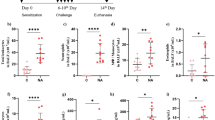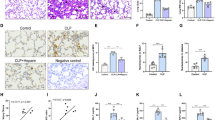Abstract
The principal sulfatide of virulentMycobacterium tuberculosis, sulfolipid-I (SL-I), both directly stimulates neutrophil superoxide (O −2 ) release and, at substimulatory concentrations, primes these cells for markedly enhanced oxidative responsiveness to other stimuli. The present study was undertaken to clarify the priming mechanisms by comparing cellular events following priming doses of SL-I with those following priming with N-formyl-methionyl-leucyl-phenylalanine (FMLP). We compared the involvement of the calcium cation (Ca2+), as well as membrane protein kinase C (PKC) activity and the translocation of NADPH oxidase-cytosolic cofactor effected by priming levels of the two agonists. The investigation led to two important conclusions. First, we clearly demonstrate that priming by both SL-I and FMLP results from activation of cellular processes that are not involved in direct oxidative activation. For example, whereas direct induction of O −2 generation by FMLP and SL-I required increases in intracellular Ca2+, an increase in intracellular calcium concentration ([Ca2+]i) above basal levels was not required for priming. Second, we identified key differences in the cellular responses to priming doses of SL-I and FMLP. Whereas increased membrane PKC activity caused by priming doses of FMLP was only partially blocked by chelation of intracellular Ca2+, Ca2+ chelation completely inhibited the increase in membrane PKC activity caused by SL-I. NADPH oxidase-cytosolic factor translocation to plasma membranes was completely blocked by pertussis toxin when priming doses of SL-I were used. This guanine-nucleotide-binding protein inhibitor had no effect on FMLP-dependent translocation of the oxidase cofactors. The comparative approach introduced in this report provides a valuable and novel method to discern the complex interactions of various cellular processes that regulate the state of activation of stimulated cells.
Similar content being viewed by others
References
Bass DA, Gerard C, Olbantz P, Wilson J, McCall CE, McPhail LC. Priming of the respiratory burst of neutrophils by diacylglycerol: Independence from activation or translocation of protein kinase C. J Biol Chem 262:6643–6649;1987.
Borregaard N, Heiple JM, Simon ER, Clark RA. Subcellular localization of the b-cytochrome component of the human neutrophil microbicidal oxidase: Translocation during activation. J Cell Biol 97:52–61;1983.
Caldwell SE, McCall CE, Hendricks CL, Bass PA, McPhail LC. Coregulation of NADPH oxidase activation and phosphorylatin of a 48-kD protein(s) by a cytosolic factor defective in autosomal recessive chronic granulomatous disease. J Clin Invest 81:1485–1496;1988.
Castagna M, Takai Y, Kaibuchi K, Sano K, Kikkawa U, Nishizuka Y. Direct activation of calcium-activated, phospholipid-dependent protein kinase by tumor-promoting phorbol esters. J Biol Chem 257:7847–7851;1982.
Clark RA, Volpp BD, Leidal KG, Nauseef WM. Two cytosolic components of the human neutrophil respiratory burst oxidase translocate to the plasma membrane during cell activation. J Clin Invest 85:714–721;1990.
Curnette JT. Activation of human neutrophil nicotinamide adenine dinucleotide phosphate, reduced (triphosphopyridine nucleotide, reduced) oxidase by arachidonic acid in cell-free system. J Clin Invest 75:1740–1743;1985.
Della Bianca VD, Grzeskowiak M, Cassatella MA, Zeni L, Rossi F. Phorbol 12, myristate 13, acetate potentiates the respiratory burst while it inhibits phosphoinositide hydrolysis and calcium mobilization by formyl-methionyl-leucyl-phenylalanine in human neutrophils. Biochem Biophys Res Commun 135:556–565;1986.
English D, Roloff JS, Lukens JM. Chemotactic factor enhancement of superoxide release from fluoride and phorbol myristate acetate stimulated neutrophils. Blood 58:129–134;1981.
Finkel TH, Pabst MJ, Suzuki H, Guthrie LA, Forehand JR, Phillips WA, Johnston RB Jr. Priming of neutrophils and macrophages for enhanced release of superoxide anion by the calcium ionophore. J Biol Chem 262:12589–12596;1987.
Forehand JR, Pabst MJ, Phillips WA, Johnston RB Jr. Lipopolysaccharide priming of human neutrophils for an enhanced respiratory burst: Role of intracellular free calcium. J Clin Invest 83:74–83;1988.
Gay JC, Beckman JK, Zaboy KA, Lukens JN. Modulation of neutrophil oxidative responses by platelet activating factor. Blood 67:931–936;1986.
Gay JC, Stitt ES. Platelet-activating factor enhances protein kinase C activity in phorbol myristate acetate treated neutrophils. J Cell Physiol 137:439–447;1988.
Gay JC, Stitt ES. Chemotactic peptide enhancement of phorbol ester-induced protein kinase C activity in human neutrophils. J Leukoc Biol 47:49–59;1990.
Goren MB. Sulfolipid I ofMycobacterium tuberculosis strain H37Rv. I: Purification and properties. Biochem Biophys Acta 210:116–126;1970.
Goren MB, Brokl O, Roller P, Fales HM, Das BC. Sulfatide structure of the principal sulfatide (SL-I). Biochemistry 15:2728–2735;1976.
Grynkiewicz G, Poenie M, Tsien RY. A new generation of Ca2+ indicators with greatly improved fluorescence properties. J Biol Chem 260:3440–3450;1985.
Grzeskowiak M, Della Bianca V, Cassatella MA, Rossi F. Complete dissociation between the activation of phosphoinositide turnover and of NADPH oxidase by formyl-methionyl-leucyl-phenylalanine in human neutrophils depleted of Ca2+ and primed by subthreshold doses of phorbol 12, myristate 13, acetate. Biochem Biophys Res Commun 135:785–794;1986.
Guthrie LA, McPhail LC, Henson PM, Johston RB. Priming of neutrophils for enhanced release of oxygen metabolites by bacterial lipopolysaccharide: Evidence for increased activity of the superoxide-producing enzyme. J Exp Med 160:1656–1671;1984.
Heyworth PG, Curnutte JT, Nauseef WM, Volpp BD, Pearson DW, Rosen H, Clark RA. Neutrophil nicotinamide adenine dinucleotide phosphate oxidase assembly: Translocation of P47-phox and P67-phox requires interaction between P47-phox and cytochrome b558. J Clin Invest 87:352–356;1991.
Holzer TJ, Nelson KE, Schauf V, Crispen RG, Andersen BR.Mycobacterium leprae fails to stimulate phagocytic cell superoxide anion generation. Infect Immun 51:514–520;1986.
Karnad AB, Hartshorn KL, Wright J, Myers JB, Schwartz JH, Tauber AI. Priming of human neutrophils with N-formyl-methionyl-leucyl-phenylalanine by a calcium-independent, pertussis toxin-insensitive pathway. Blood 74:2519–2526;1989.
Kikkawa U, Takai Y, Minakuchi R, Inohara S, Nishizuka Y. Calcium-activated, phospholipid-dependent protein kinase from rat brain: Subcellular distribution, purification, and properties. J Biol Chem 257:13341–13348;1982.
Kraft AS, Anderson WB. Phorbol esters increase the amount of phospholipid-dependent protein kinase associated with plasma membrane. Nature 301:621–623;1983.
Lad PM, Rizzo T, Smiley PA. Association of the N-formyl-Met-Leu-Phe receptor in human neutrophils with a GTP-binding protein sensitive to pertussis toxin. Proc Natl Acad Sci USA 82:869–873;1985.
Larrick JW, Graham D, Lin LS, Senyk G, Fendly BM. Recombinant tumor necrosis factor causes activation of human granulocyte. Blood 69:640–644;1987.
McCall SR, Kreis C, DiPersis JF, Borgeat P, Naccache PH. Involvement of guanine nucleotide binding proteins in neutrophil activation and priming by GM-CSF. Blood 73:588–591;1989.
McPhail LC, Shirely PS, Clayton CC, Snyderman R. Activation of the respiratory burst enzyme from human neutrophils in a cell-free system: Evidence for a soluble cofactor. J Clin Invest 75:1735–1739;1985.
Middlebrook C, Colemen CM, Schaefer WB. Sulfolipid from virulent tubercle bacilli. Proc Natl Acad Sci USA 45:1801–1804;1959.
Nishihira J, McPhail LC, O'Flaherty JT. Stimulus-dependent mobilization of protein kinase C. Biochem Biophys Res Commun 134:587–594;1986.
O'Flaherty J, Nishihira J. Arachidonate metabolites, platelet-activating factor, and the mobilization of protein kinase C in human polymorphonuclear neutrophils. J Immun 138:1889–1895;1987.
Pike MC, Jakoi L, McPhail LC, Synderman R. Chemoattractant-mediated stimulation of the respiratory burst in human polymorphonuclear leukocytes may require appearance of protein kinase activity in the cell particulate fraction. Blood 67:909–913;1986.
Pontremoli S, Michetti M, Melloni E, Sparatore B, Salamino F, Horecker BL. Identification of the proteolytically activated form of protein kinase C in stimulated human neutrophils. Proc Natl Acad Sci USA 87:3705–3707;1990.
Rider LG, Niedel JE. Diacylglycerol accumulation and superoxide anion production in stimulated human neutrophils. J Biol Chem 262:5603–5608;1987.
Smolen JE, Korchak HM, Weismann G. The role of extracellular and intracellular calcium in lysosomal enzyme release and superoxide anion generation by human neutrophils. Biochem Biophys Acta 677:512–520;1981.
Tyagi SR, Tamara M, Burnham DN, Lambeth JD. Phorbol myristate acetate (PMA) augments chemoattractant-induced diglyceride generation in human neutrophils but inhibits phosphoinositide hydrolysis. J Biol Chem 263:13191–13198;1988.
VanEpps DE, Garcia ML. Enhancement of neutrophil function as a result of prior exposure to chemotactic factor. J Clin Invest 66:167–175;1980.
Weibart RH, Kwan L, Golde DW, Gasson JC. Human GM-CSF primes neutrophils for enhanced oxidative metabolism in response to the major physiological chemoattractants. Blood 69:18–21;1987.
Weisbart RH, Galve DW, Gasson JC. Biosynthetic human GM-CSF modulates the number and affinity of neutrophil fMet-Leu Phe receptors. J Immun 137:3584–3587;1986.
Wolfson M, McPhail LC, Nasrallah VN, Snyderman R. Phorbol myristate acetate mediates redistribution of protein kinase C in human neutrophils: Potential role in the activation of the respiratory burst enzyme. J Immun 135:2057–2062;1985.
Zhang L, English D, Andersen BR. Activation of human neutrophils byMycobacterium tuberculosis-derived sulfolipid-I. J Immun 146:2730–2736;1991.
Zhang L, Goren MB, Holzer TJ, Andrsen BR. Effect ofMycobacterium tuberculosis-derived sulfolipid-I on human phagocytic cells. Infect Immun 56:2876–2883;1988.
Author information
Authors and Affiliations
Rights and permissions
About this article
Cite this article
Zhang, L., Gay, J.C., English, D. et al. Neutrophil priming mechanisms of sulfolipid-I and n-formyl-methionyl-leucyl-phenylalanine. J Biomed Sci 1, 253–262 (1994). https://doi.org/10.1007/BF02253310
Received:
Accepted:
Issue Date:
DOI: https://doi.org/10.1007/BF02253310




